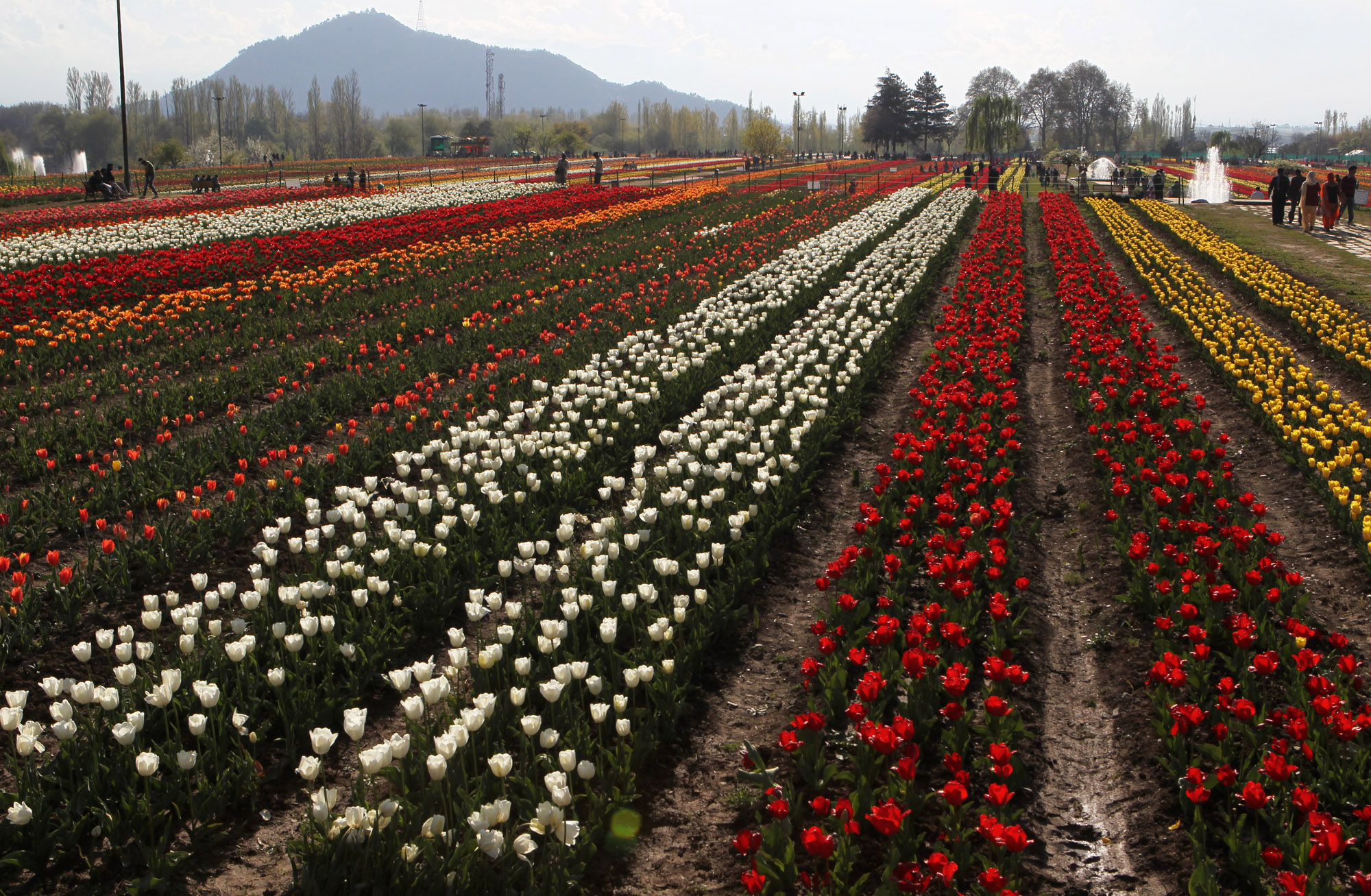Srinagar, March 21 (IANS) The royal living heritage of Kashmir, the Chinar tree, is synonymous with Kashmir's landscape and culture. First planted in 1374 in Kashmir, it has been bestowing the Valley with its shehjar, the shade (in English) of Almighty's blessing, ever since. Chinar is a Persian word that means "fame, fire, and blaze". Jammu and Kashmir celebrated Chinar Day on the 15th of March by planting Chinar saplings across districts of the UT given of their diminishing numbers. Major plantation drives were held in the districts of Budgam, Pulwama, and Srinagar. In both Budgam and Pulwama 2,000, Chinar Saplings were planted across the districts by the Horticulture Department. While in the Ganderbal district J&K's Forest Department established 'Chinar Gah' in an area spanning 100 kanals, by planting 130 trees to celebrate 130 years of the Department's existence. In Srinagar's historical Nishat Bagh 75 trees were planted commemorating 75 years of India's Independence under the banner of 'Azadi ka Amrit Mahotsav'. Seventy five species of medicinal plants are also being grown in the Herbal Garden. Further, Biodiversity Park at Dagpora is the paving way to build a grand Chinar Gah, Herbal Garden, and a section solely to grow all willow species of Kashmir. Male poplar clones are also being distributed under the 'Har Gaon Haryali' scheme. Keeping in view the plummeting Chinar presence of J&K, a process of geo-tagging the trees is in operation. A digital archive of trees will ensure their preservation and monitor their individual growth. With these initiatives, Jammu & Kashmir is actively promoting Horticulture tourism. Fruit Growers Association, Progressive Orchardists, and farmers are in interaction with the government departments for this purpose. Presently the Horticulture Department is busy organizing the Spring-Blossom festival of the year. The main attraction of the program will be the exhibition of high-quality fruits, indigenous and nearly-extinct plants, the latest technologies in farming, and machinery. The festival begins on 21st March at Khanmouh, (north tehsil of Srinagar) and will last for a month. Now that the monochrome winter has thawed the earth, Kashmir is blooming with millions of flowers, their fragrances wafting through the gardens of the Valley. Fluttering in the wind on the hillsides and meadows are hyacinths, narcissus, crocuses, forsythia, and many other blooms. And to enjoy the spring a globally acclaimed Tulip Festival is organized by the Tourism Department of J&K. The Zabarwan Mountains and the Dal Lake overlook Srinagar's Tulip Garden, the largest tulip garden in Asia. It is spread across 30 hectares and houses 15 lakh tulips of 60 varieties every year. As tulips are one of the most delicate flowers on the planet, they require specific climatic conditions, exactly which the Valley offers of March. This year the seven-terraced tulip garden will have a water channel and more green areas along with specific sections dedicated to unique tulip varieties like Kung Fu, Early Harvest, and Ile de France. The Department has also included modern-day facilities like Free Wi-Fi, an open-air cafeteria, and kiosks this year. Almond Blossoms are the first flowers that announce the arrival of spring in the Valley. At this time nature enthusiasts and picnickers are the first to immerse themselves in the experience of Badamwari Garden. Located on the foothills of Hari Parbat Fort, Badamwari is spread across 280 kanals with 1,000 almond trees of varied species. One part of the garden extends to Nigeen Lake adding a pleasing touch to the view. New paths and concrete structures have been built to accommodate maximum visitors. This year the Horticulture Department is working in tandem to ensure a bumper tourist season with the help of Badamwari and Tulip Gardens. A trip to Char-e-Sharif, a revered shrine located 40 km from Srinagar, also allows sightings of almond blossoms. Another upcoming tourist destination, Yusmarg, is also known for these trees. Spotted by their thick cluster of flowers, pear blossoms add to the spring scenery. Apricot blossoms can be identified with their pleasant scent and white flowers with hues of pink and red. Cherry blossoms are other prized possessions of the Valley in spring. Harwan Garden is famous for cherry trees, their branches filled with white and pink delicate flowers. Tailbal and Dara are known for being the best cherry orchards in the region; their cherries are mostly exported to neighboring countries. Kashmir in spring is a gift to the world - a kaleidoscopic utopia of colors and sweet fragrances. Soon to be connected by railways the Union Territory is prioritizing and heavily promoting its adventure tourism, cultural tourism, and horticultural tourism. In the past years, political instability in Kashmir has turned this sanctuary into a casualty. But with the new air of developments in the Valley, Kashmir will rise again like the flaming Chinar leaves.
Kashmir on the crest of horticulture tourism
- by Rinku
- March 21, 2022 2 minutes

Close to 50,000 tourists have visited Srinagar`s iconic Tulip Garden the largest in Asia since it was opened to the public on March 27. With the tulips expected to remain in bloom for at least another fortnight, authorities expect the garden to attract ov











